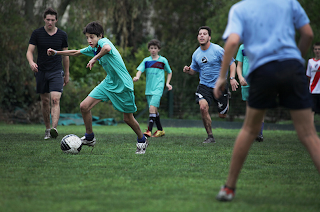The Argentine wine industry is the fifth largest producer of wine in the world. Argentine wine, as with some aspects of Argentine cuisine, has its roots in Spain. During the Spanish colonization of the Americas, vine cuttings were brought to Santiago del Estero in 1557, and the cultivation of the grape and wine production stretched first to neighboring regions, and then to other parts of the country.
Historically, Argentine winemakers were traditionally more interested in quantity than quality with the country consuming 90% of the wine it produces (12 gallons/45 liters a year per capita according to 2006 figures). Until the early 1990s, Argentina produced more wine than any other country outside Europe, though the majority of it was considered unexportable. However, the desire to increase exportsfueled significant advances in quality. Argentine wines started being exported during the 1990s, and are currently growing in popularity, making it now the largest wine exporter in South America. The devaluation of the Argentine peso in 2002 further fueled the industry as production costs decreased and tourism significantly increased, giving way to a whole new concept of enotourism in Argentina.
The most important wine regions of the country are located in the provinces of Mendoza, San Juan and La Rioja. Salta, Catamarca, Río Negro and more recently Southern Buenos Aires are also wine producing regions. The Mendoza province produces more than 60% of the Argentine wine and is the source of an even higher percentage of the total exports. Due to the high altitude and low humidity of the main wine producing regions, Argentine vineyards rarely face the problems of insects, fungi, molds and other grape diseases that affect vineyards in other countries. This allows cultivating with little or no pesticides, enabling even organic wines to be easily produced.
There are many different varieties of grapes cultivated in Argentina, reflecting the country's many immigrant groups. The French broughtMalbec, which makes most of Argentina's best known wines. The Italians brought vines that they called Bonarda, although Argentine Bonarda appears to be the Douce noir of Savoie, also known as Charbono in California. It has nothing in common with the light fruity wines made from Bonarda Piemontese in Piedmont. Torrontés is another typically Argentine grape and is mostly found in the provinces of La Rioja, San Juan, and Salta. It is a member of the Malvasia group that makes aromatic white wines. It has recently been grown in Spain. Cabernet Sauvignon, Syrah,Chardonnay and other international varieties are becoming more widely planted, but some varieties are cultivated characteristically in certain areas.
In November 2010, the Argentine government declared wine as Argentina's national liquor.







































